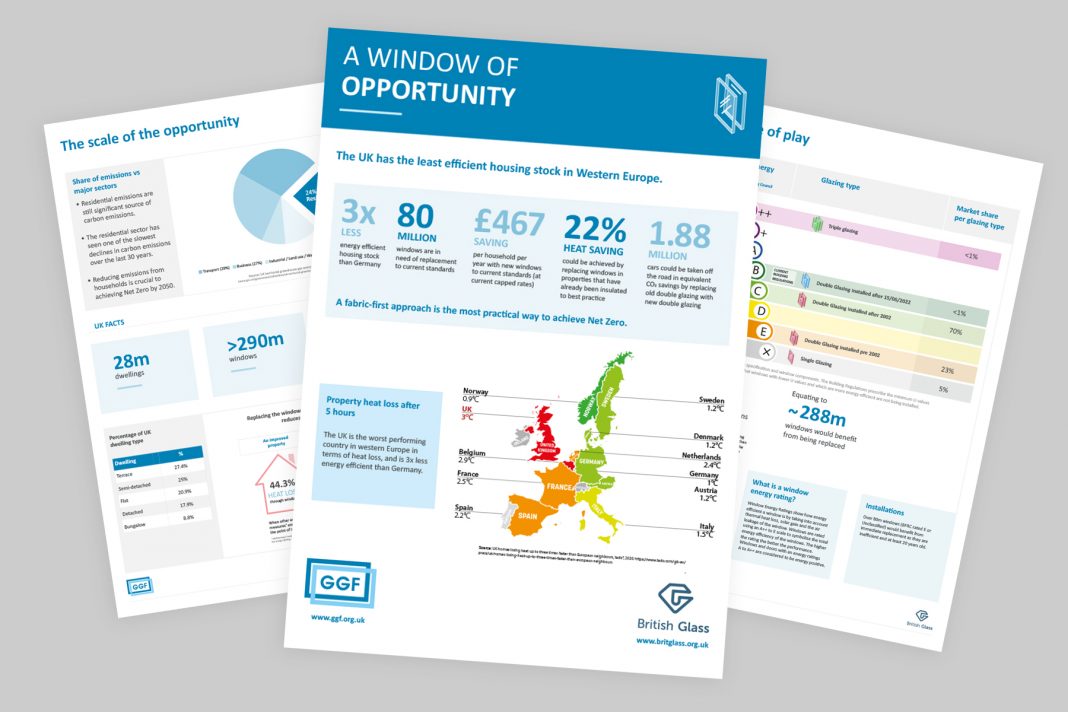The Glass & Glazing Federation has hit back at the Treasury’s decision to leave glazing out of its Energy Company Obligation (ECO+) Scheme and the Heat and Buildings Strategy with a piece of research showing the essential role of fenestration in achieving Net Zero.
The organisation, which commissioned the research from Elmhurst Energy in association with British Glass, has now condensed the findings into a simple graphic, A Window of Opportunity to spell out its case with clear statistics.
“We decided to commission this substantial piece of research because when the Treasury re-published the Energy Saving Materials list, Glazing had once again been left out,” said GGF head of advocacy & stakeholder relations Chris Beedel.
“When asked why, the response was that 86% of homes already have double glazing. As we all know, that shouldn’t be the end of the story, but we needed facts to make our stance clearer to those outside of the industry and most importantly, Government.
“We have translated the research into an easy-to-read infographic entitled ‘A Window of Opportunity’ which highlights the significant difference glazing can make. It’s also an infographic which can support the industry’s sales proposition immediately.
“Some of the key statistics uncovered by the research were that the UK is the worst performing country in Western Europe in terms of heat loss, with residential properties taking nearly a quarter of all emissions. Importantly, looking at homes that had loft, floor and wall insulation, draught proofing, low energy lighting and solar water heating, while the heat load had reduced, 44.3% of heat loss was then through the windows as the point of least resistance. If the same house then had windows installed to the latest standards, the heat loss reduced to 22%. This clearly demonstrates that any approach to saving energy should include the entire building envelope, including glazing.”
He continued: “The research also highlights the fact that from the 15th June 2022 the minimum requirement was for B rated windows, while 70% installed since 2002 were C rated or above. So, although lots of homes do already have relatively new windows, not many meet the building standards relevant today. In fact, we calculate that 80 million windows would benefit from immediate replacement. That would save as much C02 as taking 1.88 million cars off the road. The study also estimates that the average annual saving per household for upgrading windows to current standards is £467.
“We will continue to lobby Government to get glazing recognised as the clear energy saving home improvement it is, but in the meantime this research gives us all a fantastic insight into the importance of upgrading the UK’s housing stock with more up to date windows.”












